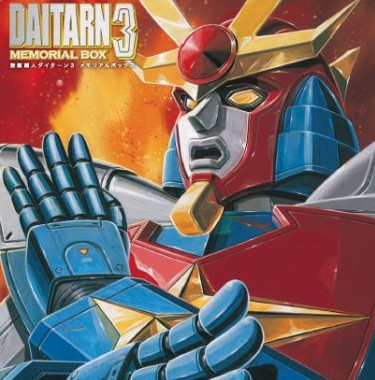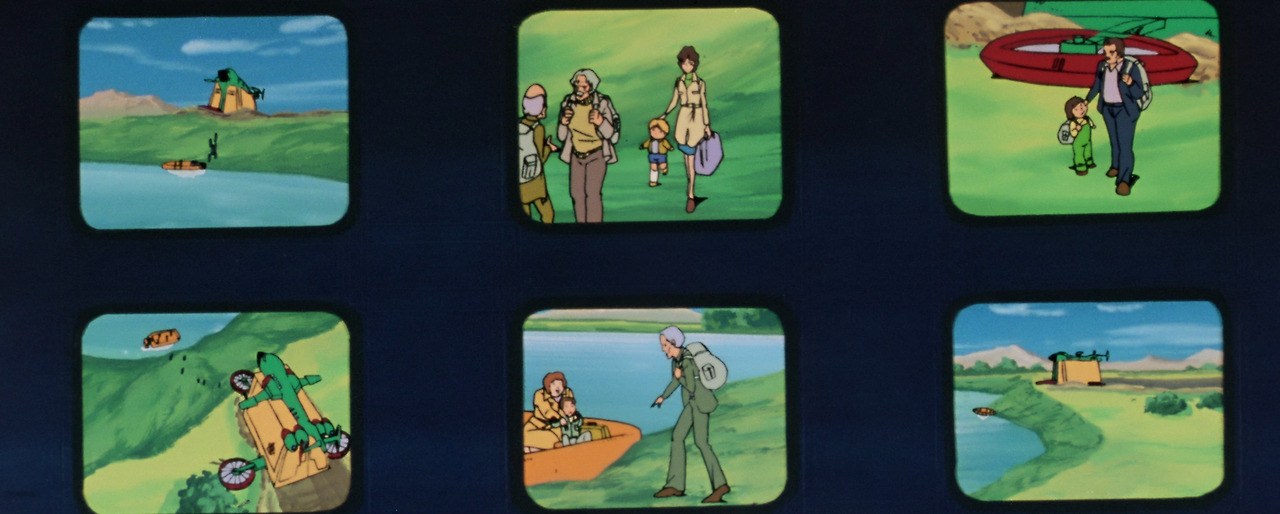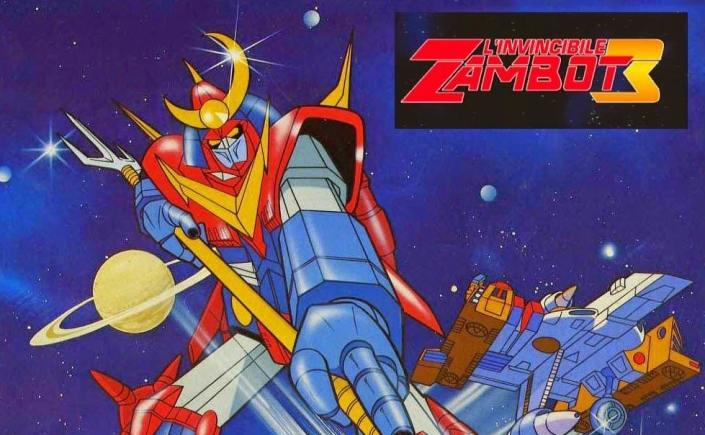This interview was originally published in the 2018 autumn edition of Great Mechsnics G.
— You were credited as the mechanical designer for Invincible Super Man Zambot 3, but wasn’t that your first time working on an anime?
Hirayama Rioji: Yeah, getting my foot into Nippon Sunrise’s (Currently: Sunrise) office was my first step. Getting in there was great and all, but at first I had absolutely nothing to do (laughs). Yamaura Eiji, the office director who would later become Sunrise’s president, was often sitting around reading books. I just remember not getting any work in the beginning.
— How did you get your job at Nippon Sunrise?
Hirayama: Before entering Nippon Sunrise, I was an apprentice under a manga artist where I drew box art for plastic models. I had quit that job and started working part-time elsewhere. Because of the box art I had done, though, I was introduced to Numoto Aomi (originally from Mushi production helped found Sunrise) from Takara (Currently: Takara-Tomy) and offered a job at Nippon Sunrise. I’m not sure if I was considered part of the regular staff at that point (laughs). I had a salary that I could eat with and, since I wasn’t anywhere near marriage, and was very thankful for that (laughs).
— What kind of work did they start you out with?
Hirayama: Absolutely nothing. Without a single task given to me, my days were filled by chatting with my coworkers. Eventually, Izuka Masao (who would become the reference office chief) pulled me aside and took it upon himself to show me the fundamentals of making anime. I owe a lot to Izuka for everything he taught me.
After helping out Izuka for about half a year, Yamaura told me to think up a robot. I asked him if anything goes and he said it needed the gimmick of having three parts that combined into one. It kind of developed as I worked — this part would fit here, and this part would become the head while that became the leg — and I somehow managed to turn out a good design. It’s like all of the sudden the finished design appeared in front of me (laughs).
After that, Yamaura and I worked out the details of the design like trying to add wings and such until it became a finished product. I remember being told to go to Takara and talk to them about if we could make the design into a toy.

— You were a new hire and still in your 20s, yet you were sent to Takara by yourself?
Hirayama: Yep, no one accompanied me (laughs). I was on my own to explain to Takara all the things the robot could and couldn’t do. A back and forth of that mixed in with their opinions of the design all boiled down to the strength of the final combined robot. In preparation for that Yamaura had suggested a crescent moon on his head.
At the time, there was an unwritten rule for robot designs in anime — “everything must be symmetrical.” This was back when you had to trace keyframes from the backside, so it made sense, but we weren’t designing for an anime, so we added a tilted crescent moon.
— The main components for the combined mech were the fighter jet, tank, and larger aircraft. Were there any other types considered for the final product?
Hirayama: I didn’t decide what combined from the start. When I thought about the final combination, I was thinking what could end up making the shapes I needed. When I noticed that the back was pretty empty, I added continuous tracks and decided to go with a subterranean mech. That was how I worked. Designing the main mech first and then progressing with the component mech types based on that. That’s how it ended up with the airplane, tank, and whatnot.

— Were you aware that while Clover distributed the Zambot 3 toys, Takara was actually created as a subsidiary?
Hirayama: I knew nothing about that at the time.
— While you were working on Zambot 3’s design, did you ever get the chance to talk with the director, Tomino Yoshiyuki?
Hirayama: I remember first meeting Tomino in the studio when he was set to be Zambot 3‘s director. After that, he taught me the ins and outs of anime production/directing. I liked to think of myself as Tomino’s best student. I used to jokingly argue with Takizawa Toshifumi, a producer at the time, as to who was the better student. “I’m Tomino’s best student.” “No, no, no. I’m Tomino’s best student.” It was a lot of fun passing the days like that.
— Once the anime was confirmed, did Tomino and Studio Nue (in charge of mechanical designs) put the finishing touches on Zambot 3’s design?
Hirayama: I didn’t have direct contact with Takachiho Haruka or Miyatake Kazuki from Studio Nue, but I heard their ideas about weapons and other design aspects through our production assistant.
— Zambot 3 kind of became a motif for Nippon Sunrise with the whole samurai armor look and the crescent moon helmet. Was this intentional from the start?
Hirayama: Yamaura told me that it’s better to go with designs that people are familiar with over ambiguous ones — “Like armor!” So that’s the direction I went in. In any case, I started with the combination gimmick, so the design after that was basically a box. After that, I got ideas here and there from other people about making the wings bigger and such. Before I knew it, the design was done.
Then Yasuhiko Yoshikazu came in (via a cleanup company) and made everything anime ready. When I saw the drawing I was floored — They made it look this cool?! I felt that they had a fantastic person working over there. I think Yasuhiko added in some ideas from Studio Nue as well. As far as working on the anime Zambot 3, I mainly worked on the initial drawings for the gimmick and the 3D model. Studio Nue took it from there.

— It’s a bit of a shock that one of the component mechs, there was a tinier robot (Zambot Ace).
Hirayama: I started from the main robot and then worked the design into the three component mechs. When I was struggling on a particular part, it suddenly came to me, “What if it could also transform into a humanoid robot?” Things like where the neck would come from and all that were simple enough to think up, but I was a little unsure of how it would work out as a toy (laughs).
— Understandable seeing how transformable and combining mecha toys were seen as a luxury item. Compared to their anime counterparts they were never as amazing, though. At the time, it was just a fact that implementing those mechanisms would drive up the price, but also make it popular with children. That’s how the creative process worked for Zambot 3, correct?
Hirayama: If you build strictly from a gimmick, any stylistic design choices will go right out the window. If you can see it through the lens of an anime version, then there is hope for it.
— At that time, Toei Company was subcontracting work from Nippon Sunrise for Super Electromagnetic Robot Combattler V and Super Electromagnetic Machine Voltes. Were you able to receive any information or feedback from those two works?
Hirayama: I know about what I worked on, but for the most part, stuff like the setting, etc. was taken care of in another studio. That meant I was just as in the dark about combination robot toys as I was when I wasn’t working on it. That’s why I rolled with the three combining into one gimmick. I was shocked when I saw Zambot 3 animated, though. I’d drawn up so many rough sketches that I hadn’t the faintest idea of what was mine and what was other’s ideas.

— After that, how were you involved in the anime’s production?
Hirayama: As soon as production on the anime began, my work with the robots ended. Shortly after, I was told that I should work on other mechanical designs — it was all the conventional designs like the jeeps and cars. The SF designs were left to Studio Nue. I also helped with cleaning up cels for Invincible Steel Man Daitarn 3. That’s when I wondered if I could direct an episode on my own and decided to consult with Tomino and the producer, Shibue Yasuo. They told me to draw up a storyboard. Looking back that was pretty brazen of me, but back then I was excited for the chance (laughs).
I was handed the scenario fairly quickly and given a month to draw up a storyboard. I learn by watching others, so it was a given that my first attempt was terrible, but Tomino helped me see it through to the end. That was the 9th episode of Daitarn 3, “A Strange Pursuer.” I think that’s when Commander Frangen appeared.
— You appeared in the credits as both the storyboarder and the episode director.
Hirayama: That’s when I started working under the name Fujiwara Ryoji, but yes I was allowed to work for the first time on both at the same time.

— It was your first time handling both. Who was it that taught you?
Hirayama: Yamasaki Kazuo and Hirokawa Shuichi from the production team worked through a lot of the process with me while I drew it. Tomino gave me storyboarding tips like the 180-degree rule and the imaginary line. In all aspects, everything I learned was from watching others. I’m sure someone who went to school for animation would know a lot more than me about the fundamentals. I remember floating through the days getting scolded about film techniques as well. It was then that I got my first job working in directing (laughs).
— Had you always hoped to work as a director?
Hirayama: No, not at all. I actually wanted to be a manga artist, which is why I was working as a student under a manga artist, as I said earlier. He never let me work on manga, though. I was always drawing plastic model box art for him. From that, I got interested in anime, and it was probably the reason I had a chance to get into Nippon Sunrise. I didn’t dislike working on mechanics and robots, so it became an experience I could use for Zambot 3.
— After learning under Tomino during Daitarn 3, you entered into the rotation for writing the storyboards and directing Mobile Suit Gundam.
Hirayama: I learned under him, but it wasn’t like a school where I learned one concept after another. Sitting next to Tomino and watching him while he worked was enough of a learning experience for me.
Tomino is the kind of person that ended up redrawn at least half of whatever storyboard I handed over to him. I wonder if that’s true for all people who work on storyboards. Even Sadamitsu Shinya said he rewrote a lot of my stuff. When I was working on Daitarn 3, I didn’t get too much of my storyboards redrawn, but Gundam was a different story. Most of my Gundam storyboards were redrawn.
I remember talking with Tomino about how his storyboards are different than a lot of others’ storyboards. He told me that not a lot of people notice that. At the time I had no idea what I was talking about, it just kind of felt different. He said something about not laying it out like an anime but drawing it like you were shooting a live-action film. It still took me some time to completely comprehend that.

— It sounds like you were able to thrive very well in your work environment. Nowadays designing mechs is seen as a solo job, but back then it sounds like it was a collective effort.
Hirayama: After that, I went to work for another company, but it just wasn’t the same. Working at Nippon Sunrise, there was always something going on. We would talk ourselves silly late into the night, and that’s where a lot of great ideas were born. Everyone helped out where they could. I rode along with the production assistant, chasing around key animators and carrying around boxes of cels. For the time between when I decided to leave and when I quit, most of the people I was fond of weren’t around anymore. Even then, it was still fun.
— Were you at all hesitant about going freelance?
Hirayama: Not at all. Yamasaki, Hirokawa, and many others worked freelance.
— It’s been 40 years since you started working as a director under the name Fujiwara Ryoji.
Hirayama: The anime industry has changed quite a bit. What can be done in digital animation is remarkable. Unity from frame to frame has increased, but it is a shame that animators individuality has also been homogenized to some extent. Animators like Kanada Yoshinori, Sasakado Nobuyoshi, and Yasuhiko each had their own flair. I looked forward to seeing it. Even if they weren’t directing or producing, they stood out. If I handed them a storyboard, they would pump it full of ideas and bring it to life. It amazed me every time.
— Thank you very much for coming here today. I think I’ll have to rewatch Zambot 3 sometime soon!


Hey! This is my first visit to your blog! We are a collection of volunteers and starting a
new project in a community in the same niche. Your blog provided us useful information to work on. You
have done a outstanding job!
LikeLike
Reblogged this on Sigourneyrules.
LikeLike